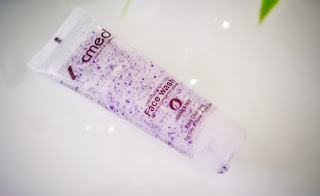Melasma : Types, Triggering factors and Treatment
In today's post I am going to briefly explain about Melasma, its triggering factors and the skincare ingredients that help in reducing hyperpigmentation.
Melasma is a pigmentation disorder of the skin that results in the development of brown patches on the bridge of nose, cheeks and forehead. This hyperpigmentation on the skin is a result of excessive melanin production from melanocytes. In patients of melasma the melanocytes (melanin producing cells) are enlarged in size and they are much more active than normal. In medical terms it is also called hyperfunctional melanocytes. Melasma is a chronic condition of the skin that requires a long term treatment.
What are the triggering factors of melasma?
There are multiple factors that can trigger melasma in individuals. The most common ones are-
1.Sun exposure- UV rays especially the UVA rays result in the formation of pigmentation on the skin. Due to this reason melasma is worsened during the summer season and is more common in individuals who spend a lot of time under the sun without protection.
2.Female hormones- estrogen and progesterone plays a vital role in the development of melasma. Use of oral contraceptive pills, hormone replacement therapy can worsen the condition. Melasma is also seen during pregnancy, most commonly during the third trimester which is known by the term CHLOASMA or Mask Of Pregnancy.
3.Stress- in some individuals stress can lead to the formation of melasma.
4.Thyroid disorder- some studies have also shown that thyroid disorders can trigger melasma in the patients.
What are the types of melasma?
Melasma is of two types-
1. Epidermal melasma- as the name suggests it is the presence of hyperpigmentation on the epidermis of the skin. It has a much better prognosis.
2.Dermal melasma- it represents the presence of hyperpigmentation on the dermis of the skin. As it is deep down it carries poorer prognosis than epidermal melasma.
How is melasma treated?
As mentioned earlier, melasma is a chronic condition which requires a long term treatment in the patients.
If melasma occurs in pregnancy then it is resolved on its own after the pregnancy is completed. As the hormone levels are back to normal the condition also fades away. Therefore it does not require any specific/ intense treatment.
Hydroquinone is the gold standard treatment for the patients of melasma. Generally 2-4% of hydroquinone is prescribed for the treatment. It reduces the tyrosinase activity which helps in reducing the melanin formation and hence results in reducing the pigmentation on the skin. Hydroquinone carries many side effects and does not suit a lot of skin types so alternative treatments are prescribed to the patients in order to minimise the side effects.
Alpha arbutin is a derivative of hydroquinone which helps in reducing the hyperpigmentation without the potential side effects that hydroquinone poses. 2% alpha arbutin works best in the form of serums to give an effective result. Alpha arbutin takes weeks-months to show any significant improvement on the skin therefore a lot of patience and continuous usage is required for seeing any beneficial results.
Kojic acid is also a good tyrosinase inhibitor which helps in reducing the hyperpigmentation on the skin. It can be used alone or in combination with alpha arbutin to see effective results.
Niacinamide is another great skincare ingredient for reducing hyperpigmentation. A concentration of 5%-10% of niacinamide is most effective in the treatment.
Azelaic acid 10-20% is also an amazing skincare ingredient that works really well in treating post inflammatory stubborn hyperpigmentation. A good azelaic acid cream/ suspension works wonders in a matter of weeks to reduce the dark spots on the face.
Vitamin C serums also help in adding a glow to the skin and help in fading away the dark spots. Nowadays many good and stable formulations of vitamin C are available as over the counter products which work effectively.
Licorice root extract also works really well in reducing the pigmentation on the skin. With continuous usage an effective result is seen on the skin.
Tranexamic Acid might also help in reducing the hyperpigmentation on the skin. If you have serious pigmentation use prescription strength Tranexamic Acid advised by your Dermatologist.
There are various chemical peels which helps to reduce the appearance of melasma on the skin such as glycolic acid peels, TCA peels and salicylic acid peels. Your dermatologist may also give a cocktail of peeling solution depending on your skin type.
It is very important to consult a dermatologist before starting any peeling solution as different ingredients react with different skin types and we don't want any more hyperpigmentation on the skin.
Sun protection is extremely important if you are dealing with melasma. Always invest in a good broad spectrum mineral sunscreen which has very good UVA coverage. Reapply the sunscreen after every two hours. Try to use scarves, sunglasses and hats for some added protection from the sun.
Melasma can come back if the triggering factors are present. So take care of your skin accordingly.
Hope you found this article helpful.
Take care.



Comments
Post a Comment